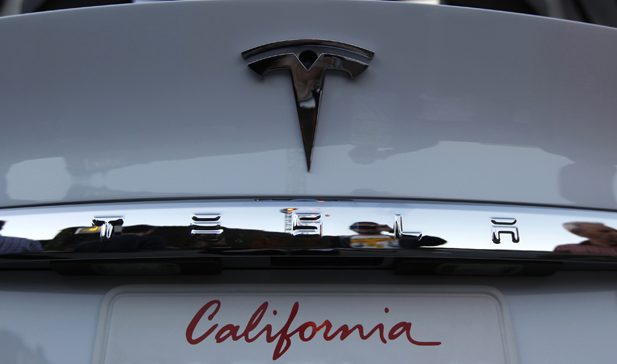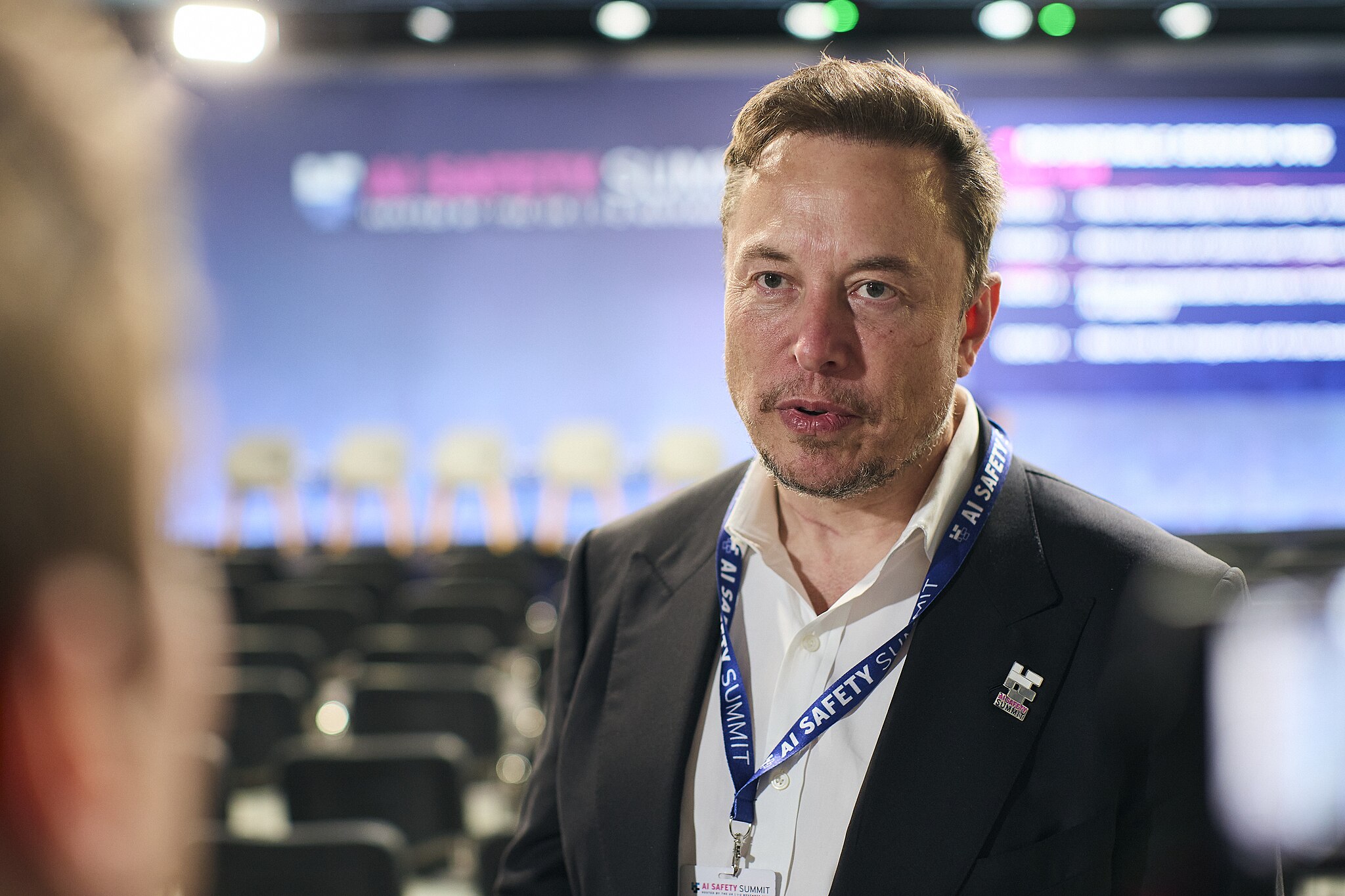Elon Musk
Tesla continues California domination despite slide in registrations
Tesla lost some of its market share in California but it still has a commanding lead.

Tesla has continued its domination in the California auto market as the state’s New Car Dealers Association (CNCDA) has released data from the first quarter of 2025.
2025 is going to be one of the more difficult years to determine the outlook of the automotive sector due to the uncertain impact of tariffs and how much they will hinder overall growth.
However, we can break Tesla’s situation down a little further and explain why there were some Year-over-Year declines in registrations in California.
As a whole, Tesla registered 42,322 vehicles year-to-date through March, data from the CNCDA’s report shows. This is a 15.1 percent decrease from the 49,857 cars that had been registered by owners in the same time frame last year.
Tesla still owns 43.9 percent of the overall Zero Emissions Vehicles (ZEV) segment in California, down from 55.5 percent at this point last year. It is a decrease, but there is more to it.
The Top 25 BEV and PHEV models are led by the Model Y and Model 3, which counted 23,314 and 13,992 registrations, respectively. The third-place vehicle is the Honda Prologue with 4,493 registrations. The Tesla Cybertruck landed in 8th place with 2,282 registrations, and the Model X was 13th with 1,800.
The same quarter last year saw roughly 10,000 more registrations for the Model Y than this year, as Q1’24 saw the all-electric crossover accumulate 33,467 registrations. The decrease is due to Tesla’s switchover of production lines to the new Model Y build. Tesla said in its quarterly delivery report that it lost “several weeks” of production due to this changeover.
Tesla dominates in California but EV growth is the true winner
Interestingly, the Model 3 performed better than last year, as it only had 11,162 registrations through the same period in 2024. It had 13,992 registrations in California this year.
The question regarding Elon Musk’s political involvement and its impact on Tesla’s sales figures remains. Without surveying them individually, there is no way of knowing exactly how many people chose to go with another EV maker’s vehicle due to the politics. However, the Model 3’s slight bump is an encouraging look: it’s not all gloom and doom.
The CNCDA writes:
“Tesla’s troubles continue to worsen as Californians are giving the cold shoulder to the direct-to-consumer automaker (and controversial owner, Elon Musk). Registrations show a massive decline of 15.1 percent through March vs. this time last year. A year and a half of continuous quarterly declines proves this downward trajectory for Tesla is a lasting trend. The company’s market share also dropped by 11.6 percent at the end of Q1, now holding less than half of the California Zero Emission Vehicle (ZEV) market for the year.”
Most importantly, Tesla outpaced every other EV maker’s registration figures by a considerable margin, despite many analysts stating that there is irreparable brand damage.
Tesla had 42,322 registrations in California in Q1, significantly more than second-place Ford, which had 5,819 ZEV registrations in the Golden State through the first three months.
Despite what many are stating regarding Tesla’s “brand damage,” the company is still in control of the market substantially. It was always expected that Tesla’s market share, which sits at 43.9 percent, would fall slightly each quarter after more automakers had EVs to offer.
However, the company’s control still remains, at least for now.

Elon Musk
Elon Musk and Tesla AI Director share insights after empty driver seat Robotaxi rides
The executives’ unoccupied tests hint at the rapid progress of Tesla’s unsupervised Robotaxi efforts.

Tesla CEO Elon Musk and AI Director Ashok Elluswamy celebrated Christmas Eve by sharing personal experiences with Robotaxi vehicles that had no safety monitor or occupant in the driver’s seat. Musk described the system’s “perfect driving” around Austin, while Elluswamy posted video from the back seat, calling it “an amazing experience.”
The executives’ unoccupied tests hint at the rapid progress of Tesla’s unsupervised Robotaxi efforts.
Elon and Ashok’s firsthand Robotaxi insights
Prior to Musk and the Tesla AI Director’s posts, sightings of unmanned Teslas navigating public roads were widely shared on social media. One such vehicle was spotted in Austin, Texas, which Elon Musk acknowleged by stating that “Testing is underway with no occupants in the car.”
Based on his Christmas Eve post, Musk seemed to have tested an unmanned Tesla himself. “A Tesla with no safety monitor in the car and me sitting in the passenger seat took me all around Austin on Sunday with perfect driving,” Musk wrote in his post.
Elluswamy responded with a 2-minute video showing himself in the rear of an unmanned Tesla. The video featured the vehicle’s empty front seats, as well as its smooth handling through real-world traffic. He captioned his video with the words, “It’s an amazing experience!”
Towards Unsupervised operations
During an xAI Hackathon earlier this month, Elon Musk mentioned that Tesla owed be removing Safety Monitors from its Robotaxis in Austin in just three weeks. “Unsupervised is pretty much solved at this point. So there will be Tesla Robotaxis operating in Austin with no one in them. Not even anyone in the passenger seat in about three weeks,” he said. Musk echoed similar estimates at the 2025 Annual Shareholder Meeting and the Q3 2025 earnings call.
Considering the insights that were posted Musk and Elluswamy, it does appear that Tesla is working hard towards operating its Robotaxis with no safety monitors. This is quite impressive considering that the service was launched just earlier this year.
Elon Musk
Starlink passes 9 million active customers just weeks after hitting 8 million
The milestone highlights the accelerating growth of Starlink, which has now been adding over 20,000 new users per day.

SpaceX’s Starlink satellite internet service has continued its rapid global expansion, surpassing 9 million active customers just weeks after crossing the 8 million mark.
The milestone highlights the accelerating growth of Starlink, which has now been adding over 20,000 new users per day.
9 million customers
In a post on X, SpaceX stated that Starlink now serves over 9 million active users across 155 countries, territories, and markets. The company reached 8 million customers in early November, meaning it added roughly 1 million subscribers in under seven weeks, or about 21,275 new users on average per day.
“Starlink is connecting more than 9M active customers with high-speed internet across 155 countries, territories, and many other markets,” Starlink wrote in a post on its official X account. SpaceX President Gwynne Shotwell also celebrated the milestone on X. “A huge thank you to all of our customers and congrats to the Starlink team for such an incredible product,” she wrote.
That growth rate reflects both rising demand for broadband in underserved regions and Starlink’s expanding satellite constellation, which now includes more than 9,000 low-Earth-orbit satellites designed to deliver high-speed, low-latency internet worldwide.
Starlink’s momentum
Starlink’s momentum has been building up. SpaceX reported 4.6 million Starlink customers in December 2024, followed by 7 million by August 2025, and 8 million customers in November. Independent data also suggests Starlink usage is rising sharply, with Cloudflare reporting that global web traffic from Starlink users more than doubled in 2025, as noted in an Insider report.
Starlink’s momentum is increasingly tied to SpaceX’s broader financial outlook. Elon Musk has said the satellite network is “by far” the company’s largest revenue driver, and reports suggest SpaceX may be positioning itself for an initial public offering as soon as next year, with valuations estimated as high as $1.5 trillion. Musk has also suggested in the past that Starlink could have its own IPO in the future.
Elon Musk
Elon Musk’s Grok records lowest hallucination rate in AI reliability study
Grok achieved an 8% hallucination rate, 4.5 customer rating, 3.5 consistency, and 0.07% downtime, resulting in an overall risk score of just 6.

A December 2025 study by casino games aggregator Relum has identified Elon Musk’s Grok as one of the most reliable AI chatbots for workplace use, boasting the lowest hallucination rate at just 8% among the 10 major models tested.
In comparison, market leader ChatGPT registered one of the highest hallucination rates at 35%, just behind Google’s Gemini, which registered a high hallucination rate of 38%. The findings highlight Grok’s factual prowess despite the AI model’s lower market visibility.
Grok tops hallucination metric
The research evaluated chatbots on hallucination rate, customer ratings, response consistency, and downtime rate. The chatbots were then assigned a reliability risk score from 0 to 99, with higher scores indicating bigger problems.
Grok achieved an 8% hallucination rate, 4.5 customer rating, 3.5 consistency, and 0.07% downtime, resulting in an overall risk score of just 6. DeepSeek followed closely with 14% hallucinations and zero downtime for a stellar risk score of 4. ChatGPT’s high hallucination and downtime rates gave it the top risk score of 99, followed by Claude and Meta AI, which earned reliability risk scores of 75 and 70, respectively.

Why low hallucinations matter
Relum Chief Product Officer Razvan-Lucian Haiduc shared his thoughts about the study’s findings. “About 65% of US companies now use AI chatbots in their daily work, and nearly 45% of employees admit they’ve shared sensitive company information with these tools. These numbers show well how important chatbots have become in everyday work.
“Dependence on AI tools will likely increase even more, so companies should choose their chatbots based on how reliable and fit they are for their specific business needs. A chatbot that everyone uses isn’t necessarily the one that works best for your industry or gives accurate answers for your tasks.”
In a way, the study reveals a notable gap between AI chatbots’ popularity and performance, with Grok’s low hallucination rate positioning it as a strong choice for accuracy-critical applications. This was despite the fact that Grok is not used as much by users, at least compared to more mainstream AI applications such as ChatGPT.








